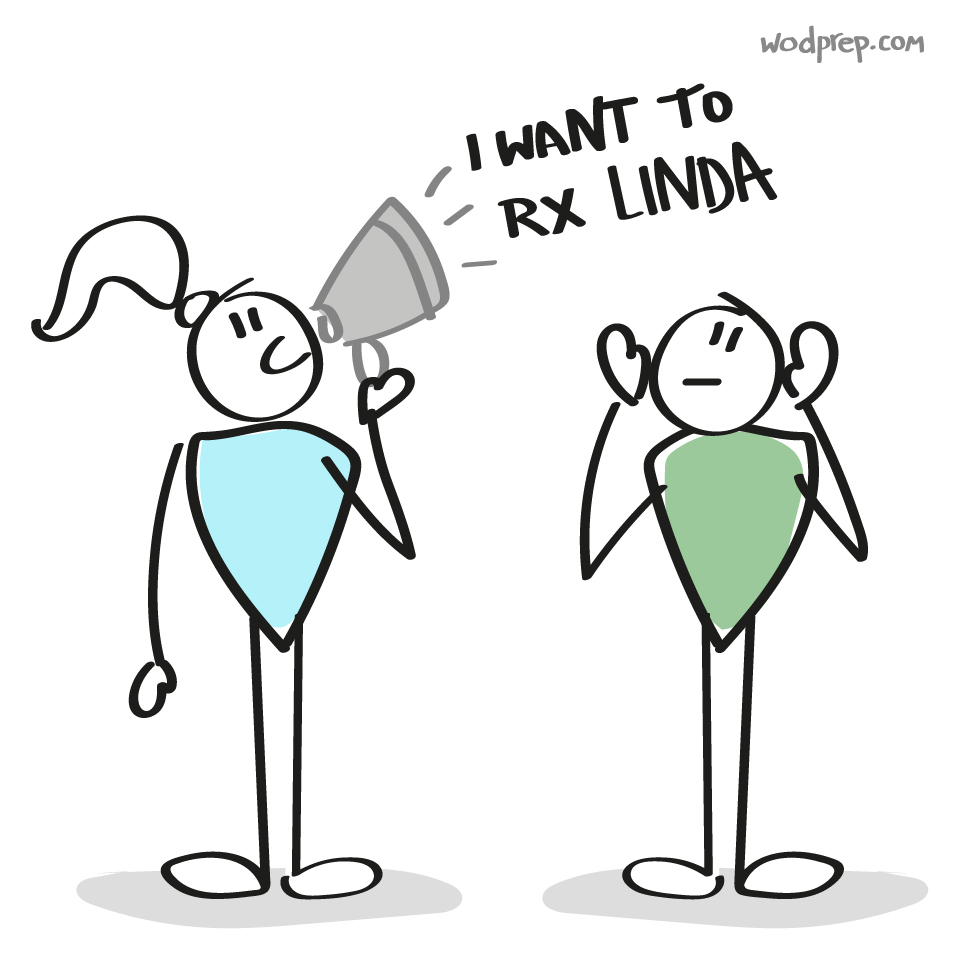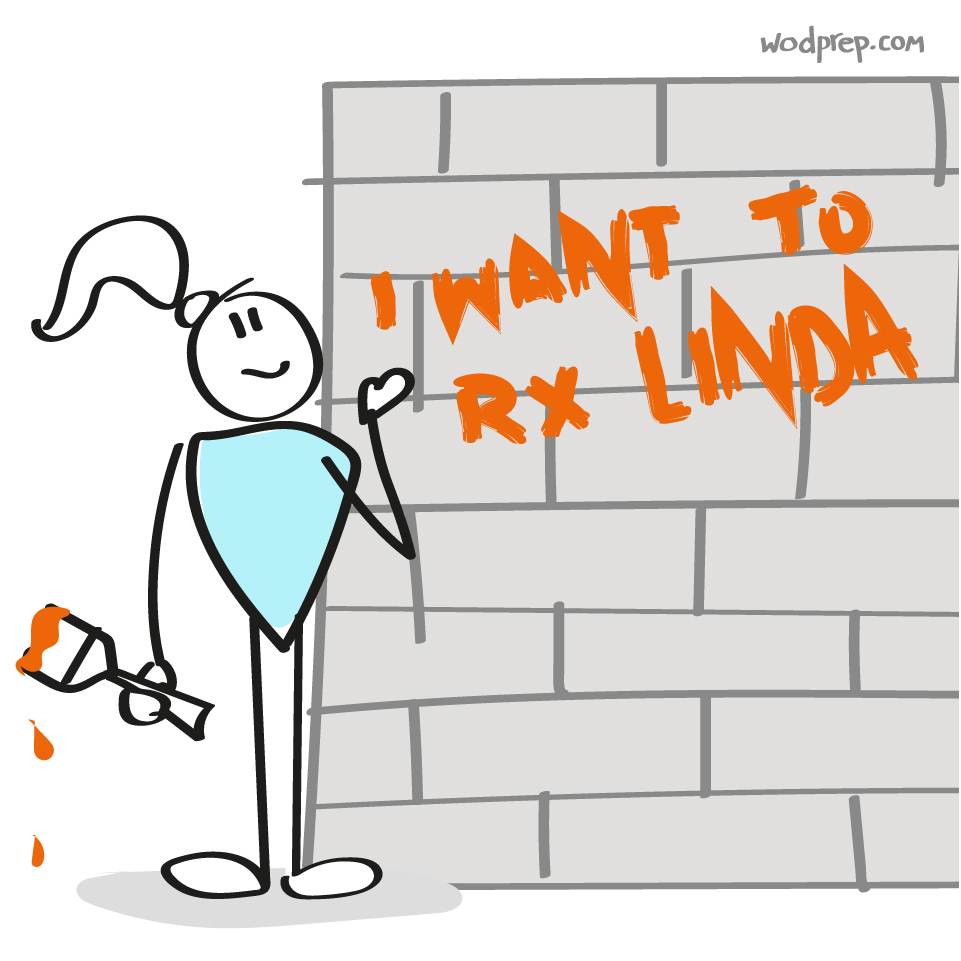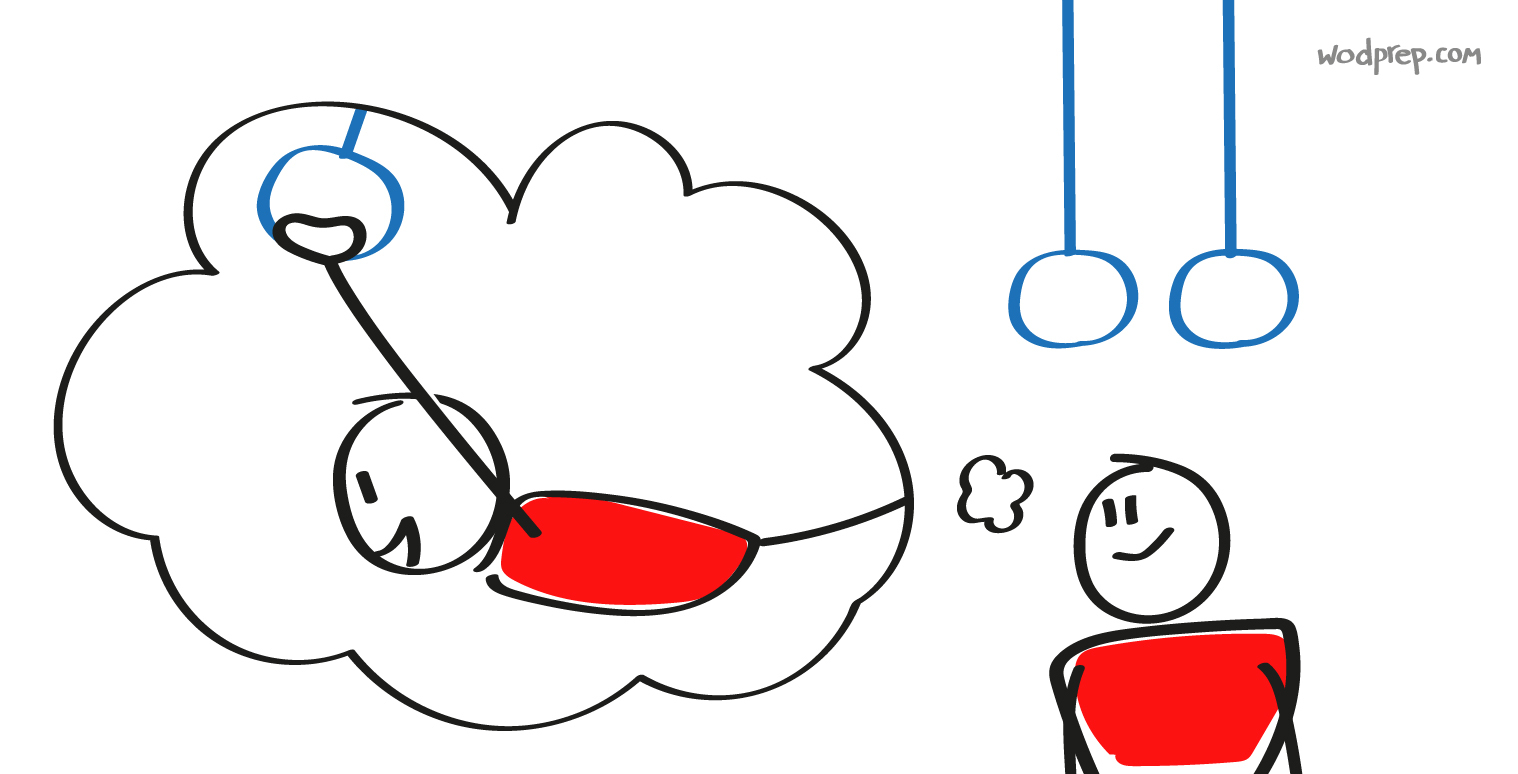New Year's Resolutions. Some people live by them, swearing at the start of each new year that...
This year will be the one.
This year will be different… this is the year I finally turn it around.
New Year, new you!
That last one always makes me cringe a little bit…
How To Set CrossFit Goals
Whether you’re crafting New Year’s Resolutions - or just mapping out goals for the week, month, quarter... the same process should be followed. You must have systems in place for CrossFit goals, work goals, life goals, etc.
You can’t just write down a goal, walk away, and expect it to get results.
With that in mind, walk through exactly how to nail down some CrossFit goals, and set yourself up for success.
1. Write goals down.
Don’t just stow those goals away in your head. Jot them down in a journal, or better yet on your chalkboard at home or on a sticky note on a mirror. Make them visible, so that you see them often, as a reminder of what you’re chasing.
The act of writing down the goal will help make it more concrete, rather than having a vague concept floating around in your head.

When crafting goals, craft them for YOU - and craft them realistically.
Don’t set a goal to get a ring muscle up because Suzie at the gym is doing the same thing. Don’t write down that you will train to run a 5 minute mile by May, if you’re currently at a 10 minute mile pace. This is highly improbable if not impossible to achieve in four short months.
Ask: What do I care about? What excites me?
If you can’t do a single strict pull-up, then it’s unrealistic to make unbroken bar muscle ups a goal… not yet at least. Think progressively, what makes sense for the path that you’re on… and what is the next major step?
2. Specificity is key
Don’t just declare something vague like, ‘I’m going to get better at CrossFit’, or ‘I want to work on gymnastics.’
That’s not specific. If you want to work on gymnastics, where are the current holes? Pinpoint those movements, and then write down how to improve them.
A good way to guide goal setting is to take a look at other CrossFit benchmark goals. If you want to be able to ‘Rx’ a particular workout… what are the weights that are programmed for the workouts?
For example, let’s say the goal is to be able to Rx “Linda”:
10-9-8-7-6-5-4-3-2-1 reps of the triplet:
- Deadlift: 1 1/2 body weight
- Bench press: body weight
- Clean: 3/4 body weight
To start, write down where your weights are currently at for bench press, clean, and deadlift weights. Then sit down with a coach and make a plan around how to increase those lifts, to make Linda a manageable workout.
3. The Best Goals For CrossFit Are Measurable (process > outcome)
At this point, you have a specific CrossFit goal to get excited about. Great. Now we have to actually start measuring and tracking the progress. This doesn’t have to be super complicated… let’s go back to that Linda example from above.
Odds are, you will be benching, deadlifting, and cleaning, at least once per week in order to increase strength over time. So create a chart, and when you take the time to specifically work on those lifts… check off that box.
It’s a similar concept to what Coach Ben talks about here:
The idea is actually derived from James Clear’s “What we measure, we improve” concept . This is very transferable to tracking nutrition as well…. which if you don’t know what I’m talking about, check out this article.
Back to Linda...
Instead of focusing on “I want to ‘RX’ Linda”, which is an “outcome goal”, you want to focus on a “process goal” to actually see results. An example process goal would be “deadlift, clean, and bench once per week for the next 12 weeks.” It’s specific, measurable, and attainable.
Put in the work weekly and check off the boxes.
As weights increase, you’ll start to see progress and feel closer and closer to finally achieving “Rx” on Linda.
4. Clue others in on your CrossFit Goals.
So you’ve new goal? Fantastic. Tell people about it. Because as the joke goes...
“How can you tell if someone does CrossFit?”
“Don’t worry, they’ll tell you.”



If you’re not the type to make a sign that says “I’m going to Rx Linda this year” and wear it to the grocery store, that’s fine. At the very least, cue in coaches, a few gym mates, maybe your dog. The more people who know, the more likely you are to stay on track, be held accountable, and get some extra tips and coaching along the way.
Which brings me to my next point….
5. Don’t be Afraid to Ask for Help
CrossFit goals are going to remain goals, and not achievements, if you’re too scared to ask for extra help. It’s much easier to climb a mountain with a team, versus alone.
This doesn’t mean that you should approach your CrossFit coach and fitness friends expecting for them to write out a year-long customized training plan…or a fully customized macro breakdown with detailed nutrition and supplement advice. Most of the traditional CrossFit coaches don’t have time for extra programming - they've got gyms to manage, classes to coach, and lives to live.
But if and when you’re feeling stuck, approach a coach, or maybe even one of the more seasoned athletes with specific questions.

DON’T pull a coach out of class mid-workout and ask how you can do better on pull-ups.
Instead, try something like this, before or after class:
“Hey Coach ________, I am currently stuck on getting out of the bottom of my pull for my pull-ups. Do you know any great drills for this? Can we work together during Open gym tomorrow?”
(Of course, we have 8-week programs that are specifically designed to help you with those challenging movements. Our accessory programming could be the perfect fit for attacking your next goals.)
6. Goal Setting & Baby Steps
Let’s go back to the example of nutrition, since it’s a common New Year's Resolution. Like most goals, patience and identifying major wins is going to be key to success.
Identify the most important factors, and then focus on them first. Don’t try to change everything at once.
So if the goal is to start tracking your nutrition, and lose 10 lbs in order to finally get a strict pull-up (which… by the way… a lot of time gymnastic goals often require some body fat loss, depending on your current body composition) don’t expect this to happen within a month. Or even two.
Acknowledge and celebrate each pound that drops off, or each day that you accurately hit your macros. Visible change might not be immediately apparent after 5 lbs have dropped off… but your body is going to reward efforts on the pull-up bar when there is less mass to pull.
Most goals have a lot of boxes that need to be checked, and work that needs to be put in to finally get there. Pat yourself on the back for even the smallest of progress, no matter how small that step may have been.
7. CrossFit Goals: The Grand Finale
So you FINALLY snagged that bar muscle up you worked on for months?
FANTASTIC, bravo. Take a look back at all of that hard work, the checked boxes, and be proud. Celebrate it with friends and coaches… and then start thinking about what you’re hungry for next.

Remember, the best CrossFit goals are the ones that are tailored for you, and maximize happiness and contentment as an athlete. Don’t just set random goals - set goals that are going to make you PROUD when they are finally achieved.
Looking for more?
Have more questions about goal setting, or aren’t sure how to go about working on a goal? Comment below! One of our coaches will get back to you with some pointers.
Disclaimer: WODprep is not associated with CrossFit® in any way and these opinions are separate from the CrossFit® brand.

[…] And don’t forget, WODprep is here to help you get those fitness goals kicked off. Start by pinpointing what your goal is – write it down. […]
[…] wording here is semantics. CrossFit goals are good, sure. But there’s a difference between something you can achieve in the next 90 days and an […]
[…] Break down CrossFit goals into manageable […]
[…] Is improving your rowing a goal that you're working on? Check out our article on goal setting, and how to set yourself up for success. […]
I like these articles. I’m saving this one about goal setting and the rowing. I’m 59 so struggle with how to define goals to get healthier, lose weight, without having something specific to aim for.
Thanks for reading Janet – we also have a few articles on nutrition & weight loss if you want to check them out 🙂
I want to learn clean